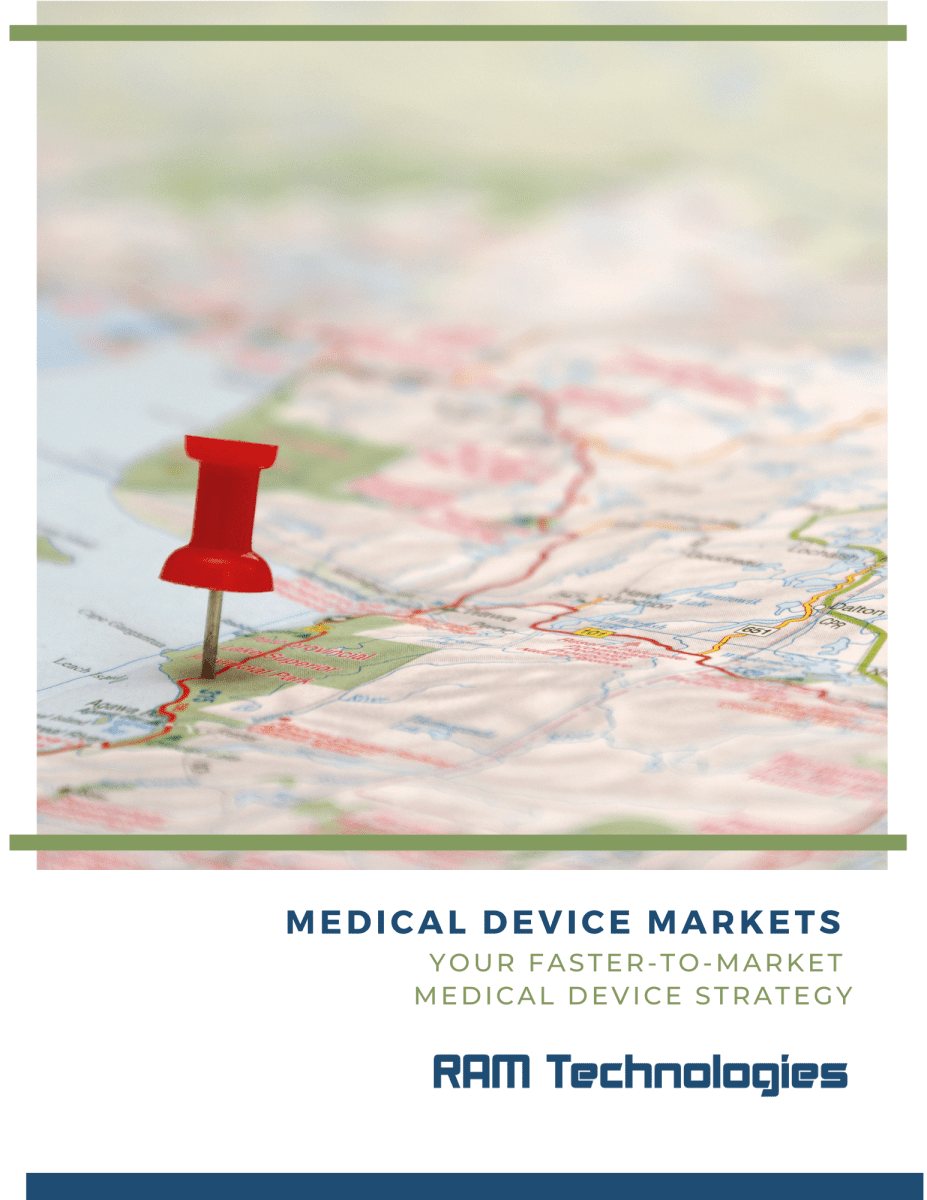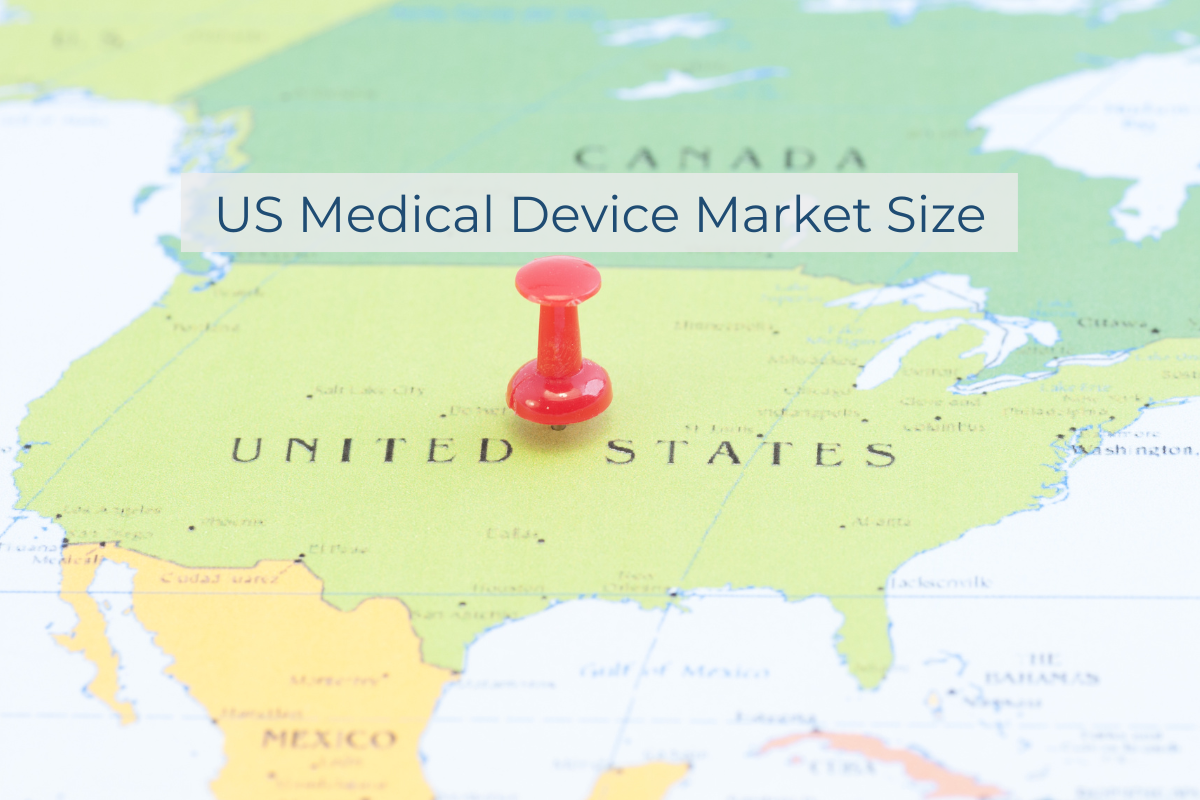Medical device manufacturers trying to decide whether to sell in the EU or U.S., or both, you need to consider a number of factors: The size of the market, what market adoption looks like, and the regulatory hoops they’ll have to jump through in order to gain approval to sell in the first place. This blog will cover the U.S. medical device market size, regulatory considerations, and making a business case for selling in the U.S.
What is the U.S. medical device market size?
The United States makes up 43.5% of the global medical technology market. Medical technology, which includes medical devices, in vitro diagnostic tools, and digital health tools and services, brought in $148.7 billion in sales, revenue, and shipments, according to AdvaMed, the U.S. trade association for medical devices. Electromedical apparatus manufacturing had a 23.3% share in total revenue. The sales, revenue, and shipments of this subsection increased 20.9% from 2014 to 2019. Medtech exports also outpace imports in the U.S., hitting $1.1 billion in 2017.
Seeking FDA approval for your medical device
Medical device manufacturers looking to gain approval to sell in the United States will need to do so through the Food and Drug Administration (FDA). Depending on the nature of your device, it could fall into one of a few different risk classifications: Class I, class II, and class III. About half of all medical devices fall under the class I category (47%), and of these, almost all are afforded exemptions from regulatory processes (95%). This means manufacturers won’t need premarket notification applications and FDA clearance, but they will still need to list their product with the FDA and register its establishment.
With the changes in the EU to MDR, requirements have actually become closer between the United States and much of Europe. Before gaining approval from the FDA, manufacturers need to submit risk management, design, and manufacturing documentation.
Class II and class III medical devices come with higher risks than class I, with class III devices associated with the potential for serious injury, illness, or even death. With higher risk comes higher regulatory controls and a need to abide by additional requirements. Class II devices go through the 510(k) process and need testing. Class III devices go through premarket approval (PMA) and need non-clinical and clinical investigations, as well as sufficient data, to convince the FDA to approve their device. Specifics on the necessary documentation and testing needed may vary based on the exact device and class divisions.
If the medical device being put on the market is substantially equivalent to one that’s already available and legal, manufacturers can use the 510(k) process to gain approval. On average, clearance takes 6 months, but it can even be faster based on the medical device category. The 510(k) pathway can cost up to $19,870, but manufacturers that qualify for a small business discount spend only $4,967.
For new devices that aren’t like anything else on the market, manufacturers have to go through the de novo process and fill out a de novo classification request. The timeline for this is about 16 months on average and can cost up to $132,464, or $33,116 for organizations that qualify for a small business discount.
What should medical device manufacturers know about recent market shifts?
Prior to EU MDR and recent FDA changes, the U.S. used to be the slowest place to go to market. The FDA required extensive clinical trial data, whereas in the EU the process was a lot smoother and more efficient. Now the roles have reversed. The EU is experiencing a backlog with manufacturers unable to get into overwhelmed notified bodies, adding considerable drag to the process. Another obstacle to approval can come from the CE conformity mark required in Europe, which can be one of three different versions depending on where in Europe you want your device to be approved.
If there is a hole in the market your medical device can fill, there may be a business case for selling in the EU. However, the ease of entry in the U.S. makes gaining approval from the FDA more attractive than ever. If you are looking for compliant PC-based power supply units for your device, RAM Technologies has you covered. Contact us with any questions today!
________________________
RAM Technologies’ power supplies are 60601-1 3.2 certified and meet 60601-1-2 EMC standards. When you’re designing your medical device and need help with a PSU, contact us for details.

Download the Markets Guide
This guide covers the basics on medical device markets, including emerging trends, current regulations, and market adoption strategies. Sign up and download it for free now!
